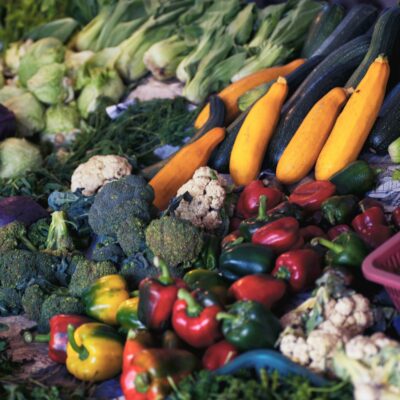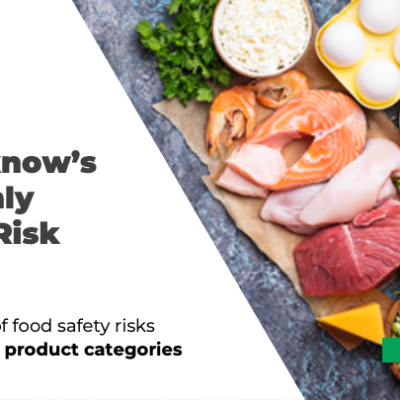
Ensure compliance in the supply chain — are digital audits a solution?

Based on the recently published report about the lessons learned for non-alcoholic beverages, we took a deep dive into the food safety data insights. The goal is to evaluate the impact of this challenging period on the global supply chain.
The non-alcoholic drinks sector plays a pivotal role in the global food economy as one of the top-performing food and beverage sectors. With an annual revenue of more than 182 billion dollars in the US alone, popular non-alcoholic beverages are made for taste, energy, and nutrition from a variety of ingredients across the world.
What are non-alcoholic beverages?
The most popular types of non-alcoholic beverages are soft drinks; fruit juices and juice drinks; and a rapidly growing subsector of functional and energy drinks which includes drinks enriched with vitamins and minerals, sports and energy drinks, as well as wellness drinks and nutraceuticals. Many of these have been developed to provide specific medical or health benefits, such as acting as energy boosters, improving digestion, enhancing immunity, or promoting heart health.

Data on hazards
As one of the largest F&B sectors, it is inevitable that there are a number of hazards to stay informed and vigilant of – and a combination of data orchestration and remote monitoring tools is the key to overcoming these.
Data available from 47 official sources – for example, the European Union RASFF, the Australian Competition, and Consumer Commission, and the Republic of China Import Refusals – provide useful insights on the top emerging hazards for non-alcoholic beverages and the associated ingredients for a period of ten years (2008-2018).
Overall, there was relative stability in the number of recall and refusal incidents over the last decade. However, between 2017 and 2018, the number of incidents skyrocketed, presenting an increase of almost 200%.
What can we learn from these historical events to protect the future of the soft drinks supply chain?
Additives and flavorings – a changing landscape
Food additives and flavorings are the most common hazard category with the largest quantity of recall and import refusal incidents during the last five years, accounting for 354 incidents. This category includes hazards such as high concentrations of food additives like benzoic acid and sodium benzoate, unauthorized use of colorings in non-alcoholic beverages, (e.g. E122 – azorubine), high content of sweeteners and unauthorized use of additives.

These have always been an issue; however, a more recent and growing concern is the ability to guarantee the provenance and authenticity of a non-alcoholic beverage. With the increase in demand from consumers on understanding the origin of their food and beverages, non-alcoholic beverage manufacturers are placing emphasis on purity, heritage, transparency of production, and the health benefits of their drinks.
Growing pressure for premium products
According to the European Fruit Juice Association, there is growing pressure from consumers for companies to produce premium fruit juices and smoothies that are healthier and more natural than ambient offerings.[i] Manufacturers are increasingly going to great lengths to source high-quality fruit and vegetables for use in natural drinks and reducing the level of processing. These drinks tend to be in premium retail positions at a higher price, and as such, consumers expect good quality.

When it comes to natural juice drinks, data shows that the inclusion of pesticides was among the highest food safety incidents. Meanwhile, fraud-related incidents were also prevalent relating to incorrect labelings such as misbranding, insufficient documentation, and missing nutritional information. For example, there are very strict rules on what can be classified as ‘organic.’[ii]
The energy drinks subsector has seen exponential growth, but it can be considered a rather safe sector, with only 14 protection incidents recorded in the last five years, half of these relating to a high content of food additives and flavorings.
How technology can help
So how can food and drink producers, processors, and manufacturers mitigate the risks across the global supply chain and ensure they conform to clearly defined quality and safety standards?
Firstly, a robust and remotely coordinated risk assessment and identification process must be deployed to prevent and mitigate food safety issues from the supplier through to production. Based on the continuous analysis of food recalls and rejections, from key national and international food authorities, food safety managers should set up an adaptive supplier verification process, monitor incoming materials, and update points of critical control in the entire production and supply process.
At the same time, digital tools can gather, enrich and communicate accurate and up-to-date intelligence to provide Quality Assurance, Procurement, Food Safety, and Quality departments with the current and future threats. As a result, this information can create flexible and adaptive systems that enable food safety professionals to spot issues straight away, update points of critical control, and intervene at any stage of the non-alcoholic beverages supply chain.
It is very important that in these uncertain times, the global supply chain remains unharmed. A break in one part of the chain can have major implications for the safety and availability of non-alcoholic beverage products in multiple countries.
If you’d like to discover how FOODAKAI can help your Food Safety & Quality team prevent product recalls by monitoring & predicting risks, schedule a call with us!
[i] European Fruit Juice Association, 2018 Liquid Fruit Market Report
[ii] https://www.usda.gov/media/blog/2012/03/22/organic-101-what-usda-organic-label-means






